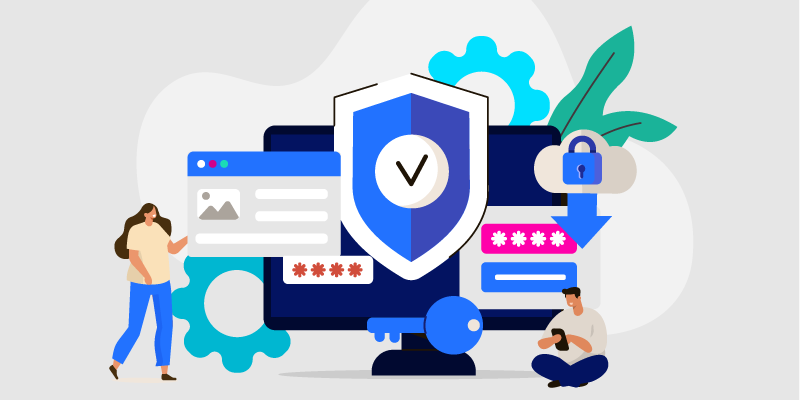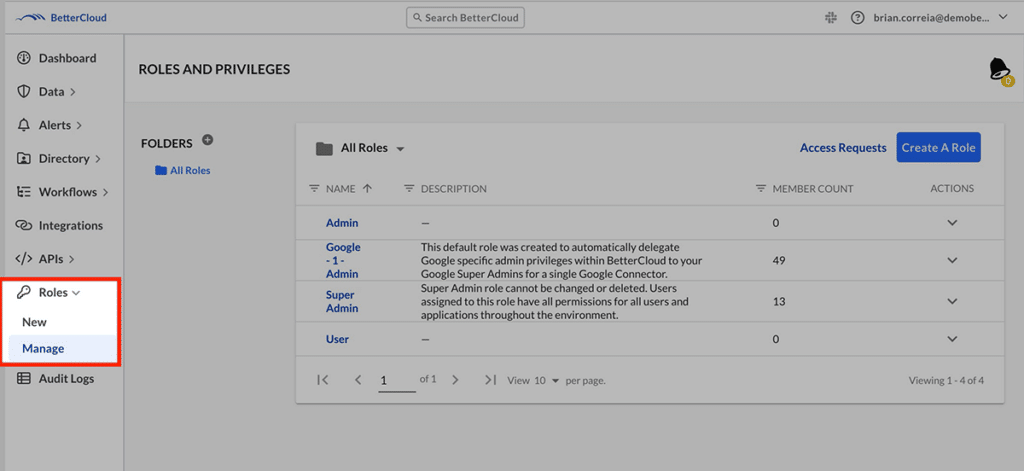Effectively managing SaaS user access permissions

To reduce SaaS stack security risk, maintain effective governance and remain compliant, IT needs to effectively manage the SaaS stack and the SaaS user access permissions that come with it.
Specifically, IT must actively control what users access which SaaS apps, as well as the files, groups, and data within them. Yet for most IT teams, it’s easier said than done.
Why is this the case, and what should IT do about it?
What makes managing SaaS user access difficult
For starters, terminology and access levels are different in each app. Google Workspace has different access levels and permissions than Canva, which is different from Workday, and so on.
Some grant user permissions for specific tasks or projects, while others do not. While some are much better than others, many SaaS apps offer little in the way of granular access roles.
And depending on a user’s task at hand, all too often, access levels must increase—forcing IT to assign super admin permissions, simply because it’s the only option.
This is when SaaS user access permissions start to creep.
Forgotten long after that task is done, that super admin status lives on. And over time, excess privileges proliferate unexamined throughout your SaaS stack.
Lastly, IT often lacks a global view of all these super admins across all apps, unable to manage what they can’t see. Before you know it, that ballooning super admin sprawl gives rise to security risks like credential theft, jeopardizing SaaS governance and compliance success.
Without the proper policies, processes, and technology in place, it’s nearly impossible to unravel the sprawl to effectively manage SaaS user access permissions. But with it, IT can confront the challenge.
Best practices for managing SaaS user access permissions
Enforcing consistent, granular SaaS user access permissions policy does three important things for your SaaS stack:
1. Improves SaaS security. It reduces risks related to stolen credentials and insider threats, should they be negligent or malicious, as well as improper file sharing or misconfigured settings.
2. Makes SaaS governance and compliance programs more effective. In SaaS governance and compliance, there’s a concept known as “design effectiveness.” Extending beyond the binary “Yes or no, does this process comply?” question, it measures how well you meet goals.
Granular policies and controls around SaaS user access permissions —that are set by role, department, or title—allow your IT team to improve how well you comply, thereby making it more effective.
3. Meets requirements for higher levels of compliance certifications. For example, higher effectiveness may help comply with Level 2 requirements, instead of just Level 1.
First define SaaS app user access privileges
Before you can enforce your granular security policy, you first need to define roles across your organization, and it needs a reliable source of truth. This is typically in an HRIS that connects to a SaaS management platform like BetterCloud to help enforce that policy.
Next set roles and SaaS user access permissions. Don’t forget to do both users and super admin roles.
If you’re aiming for effective SaaS governance and compliance, you should make sure to adhere to least privilege access.
This proven security design principle states that a user should only have access to the specific SaaS apps and data needed to complete a task. Organizations that practice least privilege access greatly improve their security posture by reducing many risks.
Next enforce policy on those permissions
1. Grant least privilege user access for all apps. Remember that SaaS user access privileges should be set as low as possible. Higher-level permissions should be granted temporarily as needed.
Your IT team should consider the following actions:
- Using your SaaS apps’ built-in access rules or admin privileges to keep user permissions, make sure you separate standard accounts from admin accounts, and higher-level system functions from lower ones. For all organizations, it’s a healthy practice to have super admins perform admin-related tasks in a dedicated super admin account, and user-related tasks in its own separate user account.
As an example: An IT team member should perform Google Workspace super admin tasks in a super admin account and use a user account for other work-related tasks.
- Create a SaaS user app access change request process that uses a ticketing system like an ITSM or Google Forms. This way, it’ll be easier to review them, compare them to your documented security policy, and reject or change access level requests accordingly.
2. Track SaaS user access permission changes. It’s important to keep track of user IDs, one-time passwords, offboarded users, and dates of changes, so it reduces risk and easier to prove compliance.
3. Conduct regular audits. Make it a habit to monitor all super admin and user permissions in all SaaS apps to stop excess user access privileges, and corresponding risks, from piling up in your SaaS stack.
How BetterCloud helps IT effectively manage SaaS user access
BetterCloud enables effective SaaS user access management in how it sets up and manages access. To begin, you simply set up user roles. From there, using a centralized view of all users, you set the granular permissions (e.g., create, edit, delete, view) that you want to add or use to elevate privileges for all SaaS apps.

In addition to Google Workspace Admin, file governance and spend optimization, as the world’s only unified platform for the entire SaaS lifecycle, BetterCloud also helps automate SaaS user access permissions.
For example, you can create adn run a workflow that automates the process of revoking super admin access from users when an application exceeds its set limit.
How does this work?
According to your security policy, your organization allows only 1 super admin for Salesforce, and IT created a series of role-based privileges to delegate granular access to other members of your team. It works because BetterCloud constantly scans your SaaS stack to detect both new admin and user accounts. If and when someone gives super admin access to another, then BetterCloud:
Using a remarkably simple workflow, IT can effectively manage SaaS user access management.
Your company then reduces risk, keeps to stated security policy and remains in compliance. And with market-leading BetterCloud, its reports and audit logs, help you easily prove it.
See how BetterCloud can help you effectively manage SaaS user access permissions.


